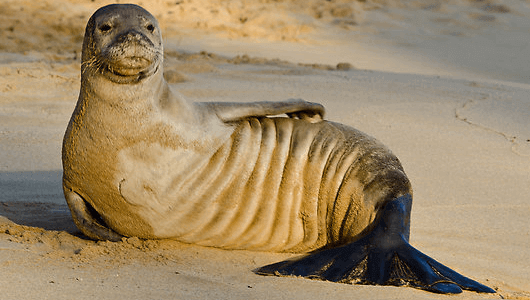The Last Jedi introduced to some weird and wonderful new creatures, from the wonderful porgs to the slightly weirder Thala-sirens. Luckily, for the Thala-sirens, cuteness is not the only criterion for inclusion in the Star Wars universe. These large marine mammals native to Ahch-To might not be great beauties, but they are apparently a very useful resource for Hobo Luke.
Thala-sirens are quite obviously mammals, or the equivalent of mammals in the Galaxy Far Far Away. They possess one of the defining characteristics for this class of animal: mammary glands. What’s interesting to note is that the creature is apparently accustomed to being milked by Luke. This is notable as milk is, in general, highly calorific, so as to be able to serve its purpose in providing for the nutritional needs of young & newborn animals, and, therefore, it costs a lot of energy to produce. This is especially true for marine mammals, as their milk has a very high fat content. As a result, a mammal will usually produce exactly only what is needed by its young and no more.
The fact that there is any milk available for Luke, who is probably not a baby thala-siren, indicates a history of domestication and selection for milk production, assumedly by humans, who we see consume milk on several occasions in-universe. While we don’t know much about the history of human habitation of Ahch-To, we do know that it is where the Jedi Order was established. The Jedi Order is, canonically, at least 6000 years old by the time Luke is seen living on Ahch-To, and humans appear to have been widespread in the galaxy and part of the Jedi Order by then, so we can assume at least intermittent human presence on the planet from that date.

On Earth, some of the first signs of domestication of animals for the purpose of milk production date back to the early Neolithic Period, with confirmed presence of domesticated cattle from approximately 6900 – 6400 BC, which shares a similar time frame. It seems likely, therefore, that ancient Jedi domesticated thala-sirens – or their wild predecessors – to use their milk as a supplemental food source on a fairly barren planet.

Luke is able to stay on dry land while milking the thala-sirens because they like to sunbathe. This is common in many marine mammals. Despite their thick layers of blubber, they are still endothermic, meaning they produce and regulate their own body heat, unlike ectotherms such as reptiles, which depend on the temperature of their environment. Generating heat consumes a lot of energy (a common measure of energy is the calorie, one unit of which corresponds to the energy required to heat one gram of water by one degree Celsius), so sunbathing, in order to raise the body temperature to an acceptable level before or after a long submersion in the ocean, is vital for many marine mammals such as seals or walruses on Earth, or, in a Galaxy Far Far Away, thala-sirens.

The thala-sirens’ peculiar snout can tell us a lot about their diet and behaviour. We see similar features on more familiar animals such as elephants or elephant seals. Elephants can use their trunks to grab food or collect water which they will then bring to their mouth, to smell with, to communicate through touch, or to produce sound. The proboscises of elephant seals are used by the males during mating season to produce loud mating calls or vocalizations, and, in both sexes, help to conserve moisture as they breathe. Dugongs, a marine mammal distantly related to elephants, use their large and muscular upper lips to aid in foraging for food on the sea floor. We can envisage all of these uses for the thala-siren’s own snout.
Once again, a seemingly esoteric and creative design has a basis in reality and can tell us a lot about the life history and behaviour of Thala-Sirens, as well as some of the history of this last refuge of the Jedi.
